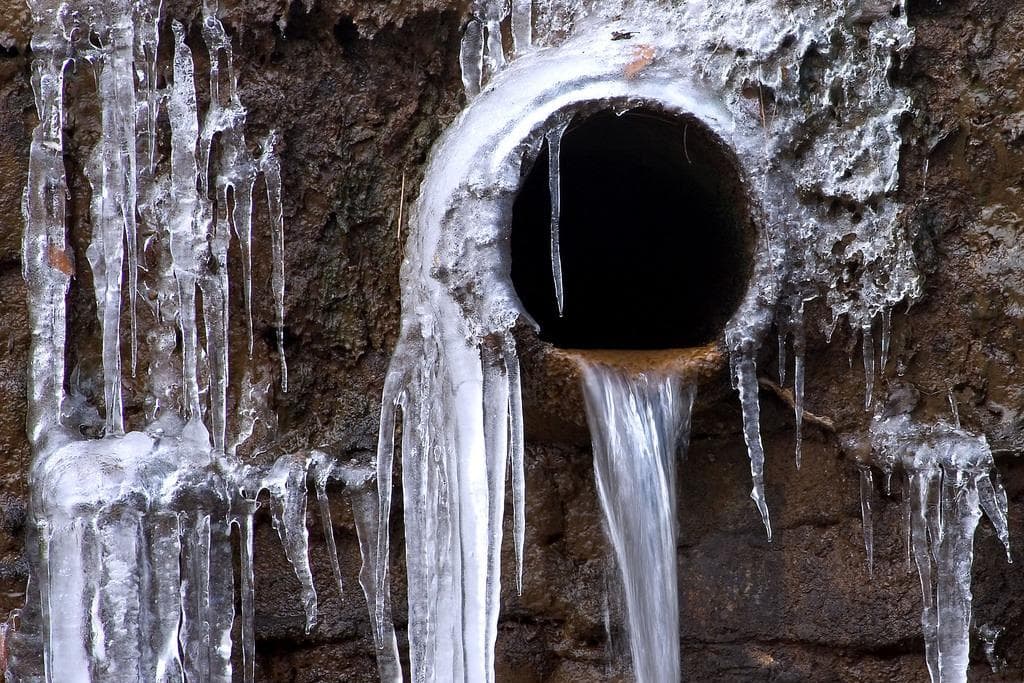Crucial Tips for Preventing Frozen Pipes in Cold Weather Conditions
Crucial Tips for Preventing Frozen Pipes in Cold Weather Conditions
Blog Article
The article author is making several good points about How To Avoid Freezing Pipes in general in this great article followed below.

Cold weather can damage your pipes, specifically by freezing pipelines. Below's how to prevent it from occurring and what to do if it does.
Introduction
As temperatures decrease, the danger of icy pipelines rises, possibly leading to costly fixings and water damages. Comprehending just how to prevent frozen pipelines is critical for homeowners in chilly environments.
Prevention Tips
Shielding susceptible pipelines
Cover pipes in insulation sleeves or utilize warm tape to secure them from freezing temperature levels. Concentrate on pipelines in unheated or outside areas of the home.
Home heating strategies
Maintain indoor spaces appropriately heated, especially locations with plumbing. Open up cupboard doors to enable cozy air to flow around pipes under sinks.
Just how to identify frozen pipes
Look for reduced water circulation from taps, uncommon smells or sounds from pipelines, and noticeable frost on subjected pipes.
Long-Term Solutions
Structural adjustments
Consider rerouting pipes far from exterior walls or unheated locations. Include extra insulation to attic rooms, cellars, and crawl spaces.
Upgrading insulation
Buy high-quality insulation for pipelines, attics, and wall surfaces. Appropriate insulation aids preserve consistent temperature levels and reduces the danger of frozen pipes.
Shielding Outside Pipes
Garden hoses and outdoor taps
Separate and drain pipes garden hoses prior to winter months. Mount frost-proof faucets or cover outside taps with insulated caps.
Understanding Icy Pipes
What causes pipes to ice up?
Pipes ice up when revealed to temperature levels listed below 32 ° F (0 ° C) for expanded durations. As water inside the pipelines ices up, it increases, putting pressure on the pipe wall surfaces and possibly creating them to break.
Risks and problems
Icy pipelines can bring about water supply disruptions, property damage, and pricey repair services. Burst pipelines can flooding homes and trigger substantial architectural damage.
Indications of Frozen Water Lines
Identifying icy pipelines early can stop them from rupturing.
What to Do If Your Pipelines Freeze
Immediate activities to take
If you think icy pipes, keep faucets open up to eliminate pressure as the ice melts. Make use of a hairdryer or towels taken in warm water to thaw pipelines slowly.
Verdict
Preventing frozen pipes needs aggressive steps and quick actions. By comprehending the reasons, indicators, and preventive measures, homeowners can safeguard their pipes during winter.
5 Ways to Prevent Frozen Pipes
Drain Outdoor Faucets and Disconnect Hoses
First, close the shut-off valve that controls the flow of water in the pipe to your outdoor faucet. Then, head outside to disconnect and drain your hose and open the outdoor faucet to allow the water to completely drain out of the line. Turn off the faucet when done. Finally, head back to the shut-off valve and drain the remaining water inside the pipe into a bucket or container. Additionally, if you have a home irrigation system, you should consider hiring an expert to clear the system of water each year.
Insulate Pipes
One of the best and most cost-effective methods for preventing frozen water pipes is to wrap your pipes with insulation. This is especially important for areas in your home that aren’t exposed to heat, such as an attic. We suggest using foam sleeves, which can typically be found at your local hardware store.
Keep Heat Running at 65
Your pipes are located inside your walls, and the temperature there is much colder than the rest of the house. To prevent your pipes from freezing, The Insurance Information Institute suggests that you keep your home heated to at least 65 degrees, even when traveling. You may want to invest in smart devices that can keep an eye on the temperature in your home while you’re away.
Leave Water Dripping
Moving water — even a small trickle — can prevent ice from forming inside your pipes. When freezing temps are imminent, start a drip of water from all faucets that serve exposed pipes. Leaving a few faucets running will also help relieve pressure inside the pipes and help prevent a rupture if the water inside freezes.
Open Cupboard Doors
Warm your kitchen and bathroom pipes by opening cupboards and vanities. You should also leave your interior doors ajar to help warm air circulate evenly throughout your home.

I am very drawn to Helpful Tips to Prevent Frozen Pipes this Winter and I really hope you enjoyed reading the new blog entry. Are you aware of somebody else who is very much interested in Prevent Frozen Pipes ? Be sure share it. Thank you for taking the time to read it.
Click On This Link Report this page